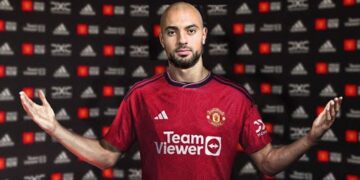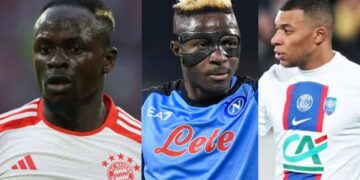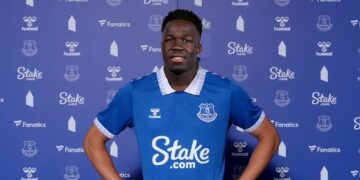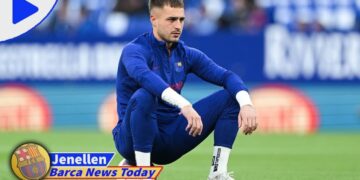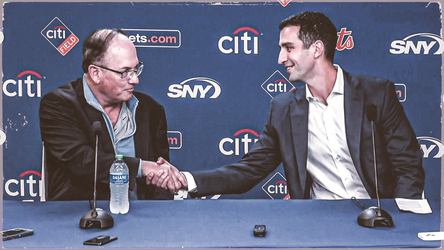Coming off the most disappointing season in the history of the franchise, relative to the expectation and eventual result, the Mets have responded by having an almost painfully measured offseason.
The reaction among the fans has been varied.
Some are accepting, some are angry, some are incredulous.
But whether or not you agree with the course the Mets are taking, one thing is crystal clear: they are executing a well-thought-out plan as they aim to become a sustainable winner.
Owner Steve Cohen tried the bold way. It didn’t work.
Now, he has given new president of baseball operations David Stearns the ability to execute a shared vision that should bear fruit sooner rather than later but will mean lowered expectations entering the 2024 season.
This is a multifaceted situation that needs to be discussed from all angles.
Before that, though, I want to state one thing explicitly: the Mets are not “punting” on 2024.
No matter how you want to interpret the meaning of the word — whether your definition of punting is giving up or passing on something or choosing to not be competitive — it does not accurately describe what the Mets are doing this offseason.
Teams that are punting are — in effect — giving up on the season to come. Punting teams don’t sign Luis Severino, Harrison Bader and Sean Manaea. They instead go internal or incredibly cheap, filling the above holes with Tylor Megill, Tyrone Taylor and Joey Lucchesi.
That’s not to say the Severino, Hader and Manaea signings are anything close to slam dunks. But they all have upside and are indicative of a team that is trying to compete in 2024 while playing the long game for 2025 and beyond.
Want an example of a team that has punted on recent seasons? Look at the Oakland Athletics or Washington Nationals.
For perhaps the best example of a team that entered a year with no expectation of competing, look at the Baltimore Orioles from 2018 to 2021, when they lost 100 or more games in every full season except for the shortened 2020 campaign.
The Orioles, of course, came out on the other side of their clear rebuild with the best farm system in baseball and won 101 games in 2023.
But again, the Mets are not punting. They’re not rebuilding. They’re retooling on the fly with an eye toward being a playoff contender in 2024 and being huge players in the free agent market during the 2024-25 offseason.
Let’s not get things twisted, though: New York is not anything close to all-in for 2024.
It’s fair to be miffed by some of their inactivity this offseason. And it’s understandable to be frustrated by a cautious approach from a team with an owner who can outspend anyone.
At the same time, it can be argued that what the Mets are doing this offseason is incredibly smart — for a number of reasons.
With the exception of their pursuit of Yoshinobu Yamamoto, a legitimate ace who fit their short-and long-term plan perfectly, the Mets have played on the margins this offseason.
Why?
It would be disingenuous for anyone to say that the Mets have largely sat out of the top end of the free agent market simply because of a worry about earmarking serious dollars to the payroll for 2025 and beyond.
Is part of this strategy due to their desire to keep the books clean? Sure. But I think much of it is a response to the free agents who are on the market.
Translation: if there were other players the Mets valued like they valued Yamamoto, this offseason would probably look a hell of a lot different. But the Mets’ desire to retool has matched up perfectly with a free agent market that is bereft of difference-makers.
Blake Snell is a two-time Cy Young winner who has the highest walk rate of any qualified pitcher in history and has eclipsed 130 innings pitched just twice.
Jordan Montgomery is a No. 3 starter who is looking to get paid like an ace.
Matt Chapman is a terrific defensive third baseman whose offensive production has fallen off a cliff.
Cody Bellinger is a former MVP who performed exceptionally well in his walk year after having a .611 OPS over his prior two seasons and getting non-tendered.
There’s a reason the above four players and roughly 150 others are still free agents with spring training a little over a month away.
Would it be exciting and raise the Mets’ ceiling this season tremendously if they took a chance on Snell and signed Josh Hader to form a super bullpen with Edwin Diaz? Of course.
But it would also be shortsighted and potentially ruinous long-term. And the Mets have smartly decided that now is not the time — and that these are not the players — to be in all-in mode.
As far as turning to the trade market for impact instead, other teams have done it this offseason. So it’s at least fair to question the Mets’ plan of attack there.
At the same time, even if they wanted to trade for Juan Soto, they lacked the young, high-impact pitching the Padres sought — and received — from the Yankees.
The same can be said as it pertains to the package the Dodgers traded to the Rays for Tyler Glasnow, which was led by young starter Ryan Pepiot.
For all of the reasons outlined above, and the ones I’ll discuss below, it makes sense for the Mets’ “all-in” window to be shut in 2024 before being flung open ahead of the 2025 season.
Here’s a look at some of the players expected to hit free agency after the 2024 season:
Juan Soto
Walker Buehler
Corbin Burnes
Max Fried
Shane Bieber
Zack Wheeler
Alex Bregman
Jose Altuve
Combine the above with this year’s incredibly weak free agent class, the Mets’ already-strong existing core, and the prospects who should debut this season and make a serious impact in 2025 — including Drew Gilbert, Luisangel Acuña and Jett Williams — and it’s clear as day why the Mets’ tactic this offseason is what it is.
It’s easy to see how by being measured this offseason and aggressive next offseason, the Mets could be a force come 2025. That doesn’t mean 2024 is some lost cause, though.
As long as the Mets finish this offseason by adding legitimate late-inning relievers and another bat — preferably a DH who can hit for power — they should enter 2024 as a legitimate playoff contender.
In the above scenario, the Mets wouldn’t need everything to go right in order to be seriously competitive. They would simply need to play to their capability.
Again, frustration with this offseason is understandable. But an analysis of the Mets’ ultimate goal needs to be a huge part of any judgment of it.
In the Mets’ history, they have never made the playoffs three straight seasons, and they have made it in back-to-back seasons just twice. That’s insane, and it’s what Cohen and Stearns are trying to change.
Putting the infrastructure in place to be a sustainable winner should eliminate disasters like 2023, and give the Mets and Cohen the ability to hit the free agent and trade market with aggression whenever they need big pieces to add to their core.
Yes, the Mets will be entering the 2024 season with much lower expectations than they had entering 2023. But that doesn’t mean the 2024 team won’t be much better than the 2023 version. And in 2025 and beyond, when the Mets should be fielding a well-rounded behemoth? This offseason will likely be a distant memory.
Read the full article here







